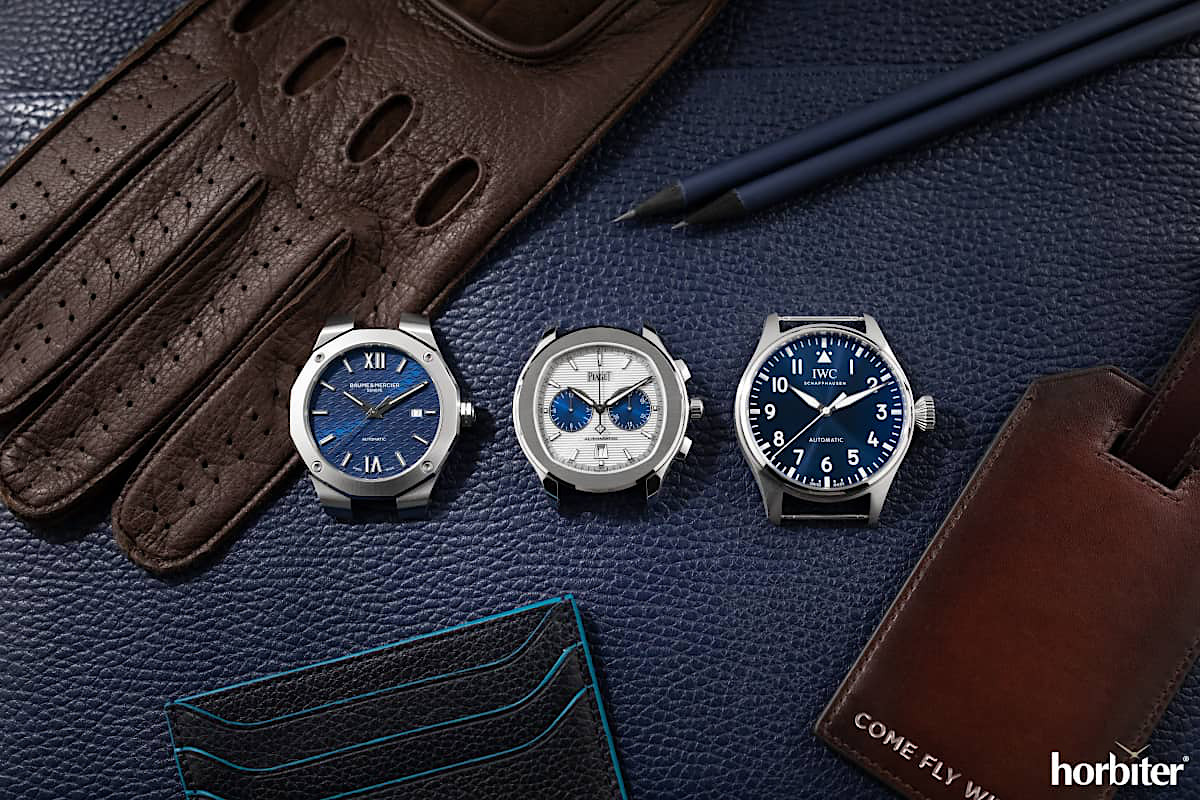Introduction
We’re past the first half of 2021, and all the watch brands have already pleased us with plenty of new timepieces. The 2021 edition of Watches and Wonders hit the spot in April and once again confirmed some trends; the green and blue dial are mainstream across most watch brands’ offerings and the blue dial, especially, is a standard option when you’re looking for a steel timepiece.
Our Video review
We picked three new watches, all belonging to the Richemont Group, despite them holding different price points and features; they share a blue dial instead, each sporting its style and colour palettes. There you have it: the Baume & Mercier Riviera, the IWC Big Pilots Watch 43 and the Piaget Polo Automatic Chronograph with a Panda Blue dial, made in a limited edition of 888 pieces. Let’s find out what each timepiece stands for.
Before going straight forward to describing each of them, let me first add a short comment about the Riviera, the Big Pilots Watch 43 and the Piaget Polo Panda chronograph. The first is Baume & Mercier’s luxury sports watch’s comeback; our sources confirmed the arrival of a new Riviera two years ago; the second one is kind of a breakthrough; we couldn’t ever imagine IWC to introduce a smaller Big Pilot’s Watch. Last but not least, we are talking about a colour option that adds a new rubber strap, thus refreshing a long-established collection, the Piaget Polo Chronograph.
The Baume & Mercier Riviera
Classic, sporty, mechanical, and quartz, it comes in various case sizes. Since 1973, when it originally appeared, the Riviera by Baume & Mercier has held its place among the most accessible luxury sports watches, featuring a signature twelve-sided bezel and multi-faceted matching case design.
Who is reminiscent of the latest generation, boasting an extra-large case on a rubber strap, hitting the spot in the late nineties? The Riviera‘s road to success was more challenging than anywhere else. Thanks to a clever price point and an attractive design, the Riviera quickly found its space amidst the most wanted luxury sports watches back then.
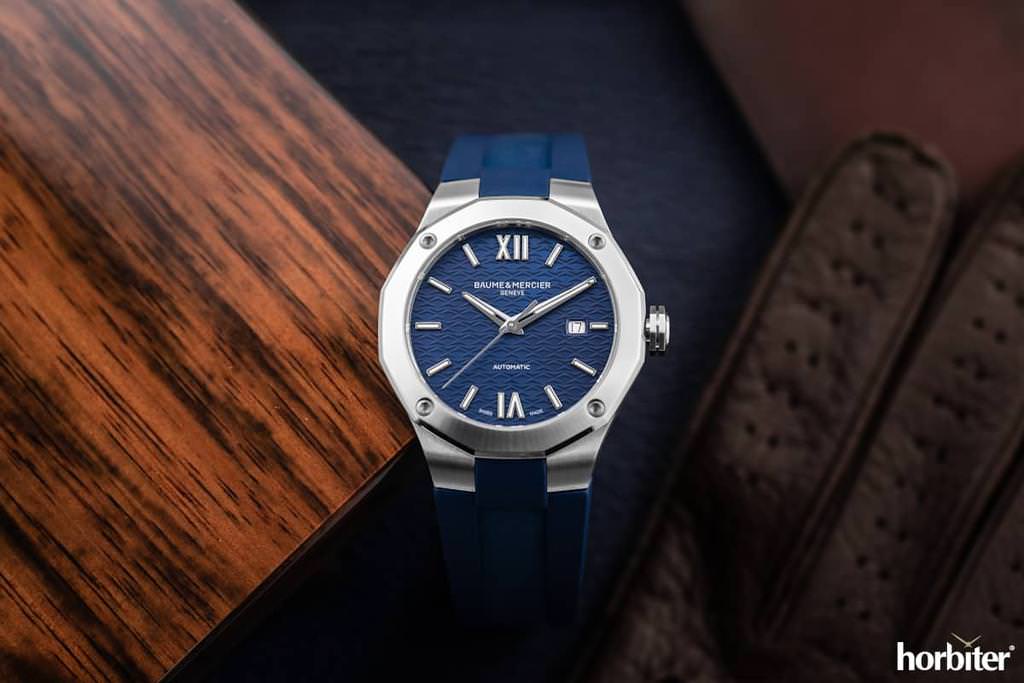 The 2021 edition confirms the dodecagonal bezel with Allen screws either on the bezel and the case-back and comes in multiple options; you can buy it on an integrated rubber strap and folding clasp or with an integrated steel bracelet.
The 2021 edition confirms the dodecagonal bezel with Allen screws either on the bezel and the case-back and comes in multiple options; you can buy it on an integrated rubber strap and folding clasp or with an integrated steel bracelet.
Let’s focus on the options for him, especially those adopting a blue dial; it, therefore, showcases a see-through case-back and an integrated bracelet with a three-link design, with the outer ones that taper towards the mid one. You can buy the new Riviera with a rubber strap paired with a triple folding clasp as an option.
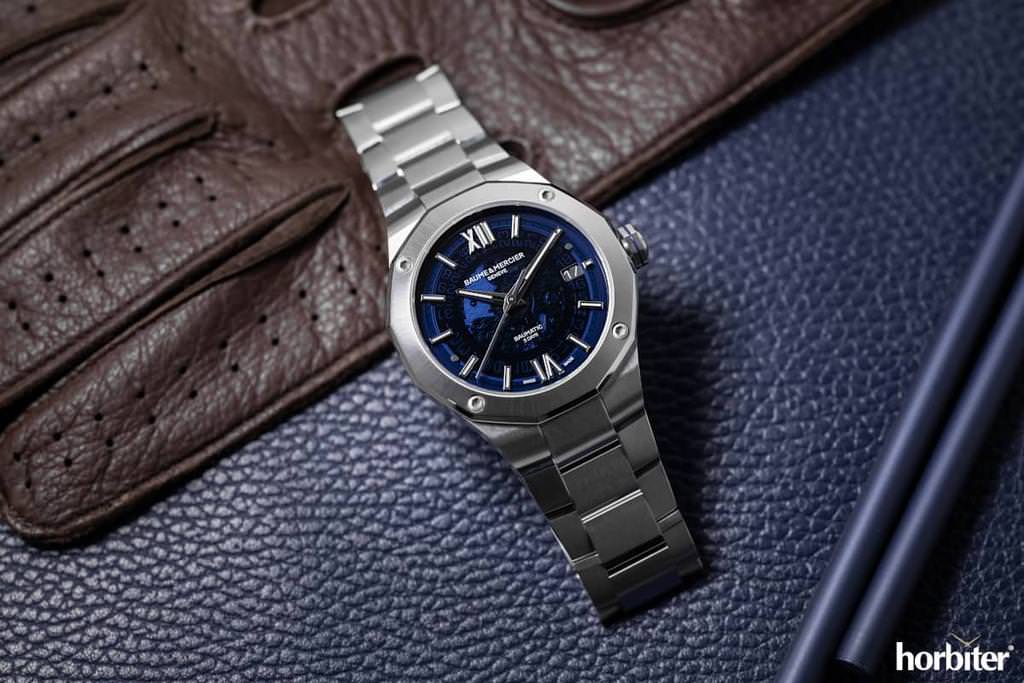 The designers took and cleaned this template by removing all the unwanted design cues from the past while working hard to make the new one as sleek and uncluttered as possible. Today’s sports watch is synonymous with elegance and a “no-frills” design, and the 2021 Riviera is no exception.
The designers took and cleaned this template by removing all the unwanted design cues from the past while working hard to make the new one as sleek and uncluttered as possible. Today’s sports watch is synonymous with elegance and a “no-frills” design, and the 2021 Riviera is no exception.
When comparing new and old ones, we can see that the bezel is thinner than ever before, and the timepiece comes in two options: one adopts a Sellita calibre, which is externally sourced and is the base offering, showcasing a blue dial with a “Chevron-like” pattern; the second one adopts a more refined Baumatic automatic movement offering five days of power reserve, and a smoked blue dial.
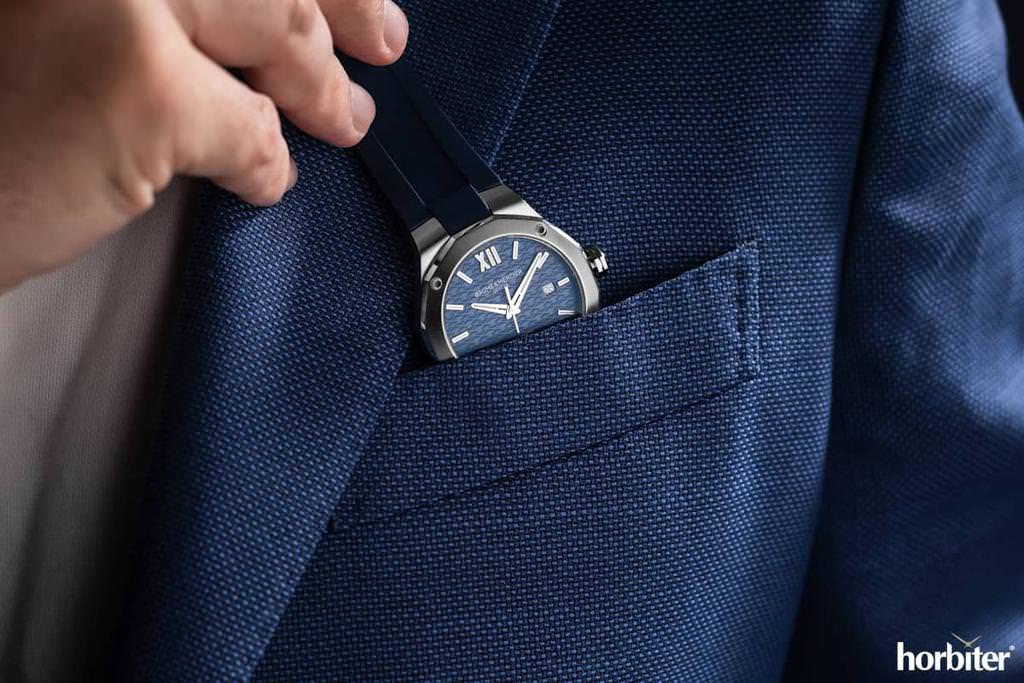 Among the key design cues, I’ll list the Roman numerals too; they create a family feeling with a key brand’s collection, the Classima. Offering a large 42 mm case, measuring just 10.66 mm in thickness, both models are not for everyone on paper, yet they fit nicely on any medium to large wrist.
Among the key design cues, I’ll list the Roman numerals too; they create a family feeling with a key brand’s collection, the Classima. Offering a large 42 mm case, measuring just 10.66 mm in thickness, both models are not for everyone on paper, yet they fit nicely on any medium to large wrist.
Although the brand has introduced a smaller quartz option (for her), I suggest Baume & Mercier introduce 40 or 39 mm sized models anytime soon. Finally, each model ensures a 100-meter water resistance making the new Riviera an all-rounder.
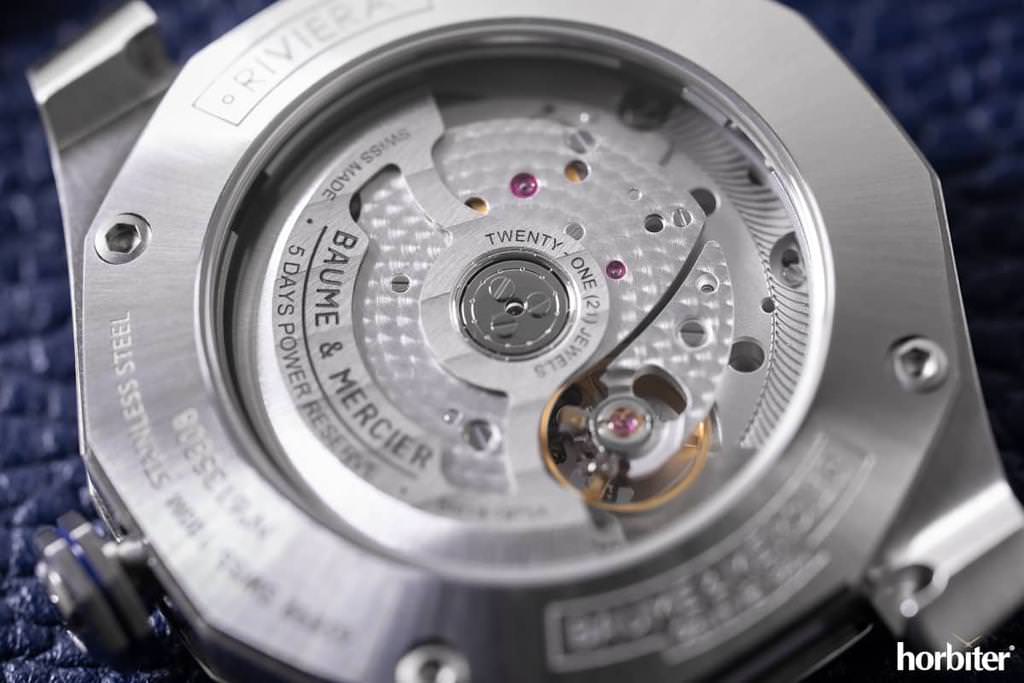 Here are my thoughts on the 2021 Riviera: I like the new one, and I also think the 42 mm size works since it is, in contrast, quite a slim watch; kudos to the brand for offering a water resistance of up to 100 meters, which is an essential requirement on any modern luxury sports watch. I would instead focus on which option to choose.
Here are my thoughts on the 2021 Riviera: I like the new one, and I also think the 42 mm size works since it is, in contrast, quite a slim watch; kudos to the brand for offering a water resistance of up to 100 meters, which is an essential requirement on any modern luxury sports watch. I would instead focus on which option to choose.
The Sellita-powered Riviera‘s dial looks cleaner than the Baumatic‘s; in contrast, the blue smoked sapphire disc on the Baumatic‘s dial makes the whole package less legible. When it comes to price points, I believe that a 1000-euro price gap is just too much. I wonder how many people can understand the technical differences between base and top models.
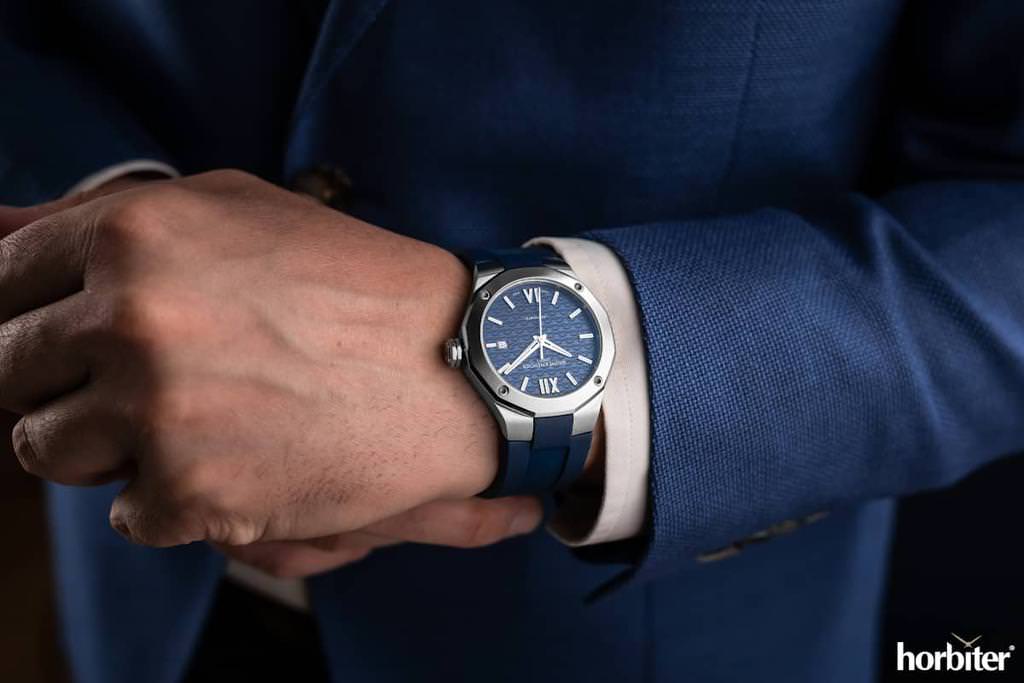 It is undeniable that the Baumatic outperforms its Sellita sibling; nonetheless, I would reduce the price gap, thus offering the most demanding buyer with the leading technology at a fairer price.
It is undeniable that the Baumatic outperforms its Sellita sibling; nonetheless, I would reduce the price gap, thus offering the most demanding buyer with the leading technology at a fairer price.
I would not say I like the rubber strap’s design; while I love the quick-change mechanism, I hardly approve that the wearer is forced to cut parts of the strap itself to adjust it. Additionally, a fair comparison must include the following: by purchasing a Riviera Baumatic, you can access an additional year of warranty by registering on Baume & Mercier‘s official website.
The IWC Big Pilot’s Watch 43
The 2021 Big Pilot’s Watch 43 was as unexpected as it gets and sets a landmark both for IWC and the class of products it belongs to. With this new collection, IWC joins the full-steel luxury sports watch segment with a value proposition that aims to bring the Big Pilot’s Watch to its “full potential”, as the brand’s executives claim.
The 43mm offering extends the Big Pilot’s Watch formula to an audience who loves the Big Pilot’s Watch and its DNA but couldn’t buy the current one either for its size and price tag.
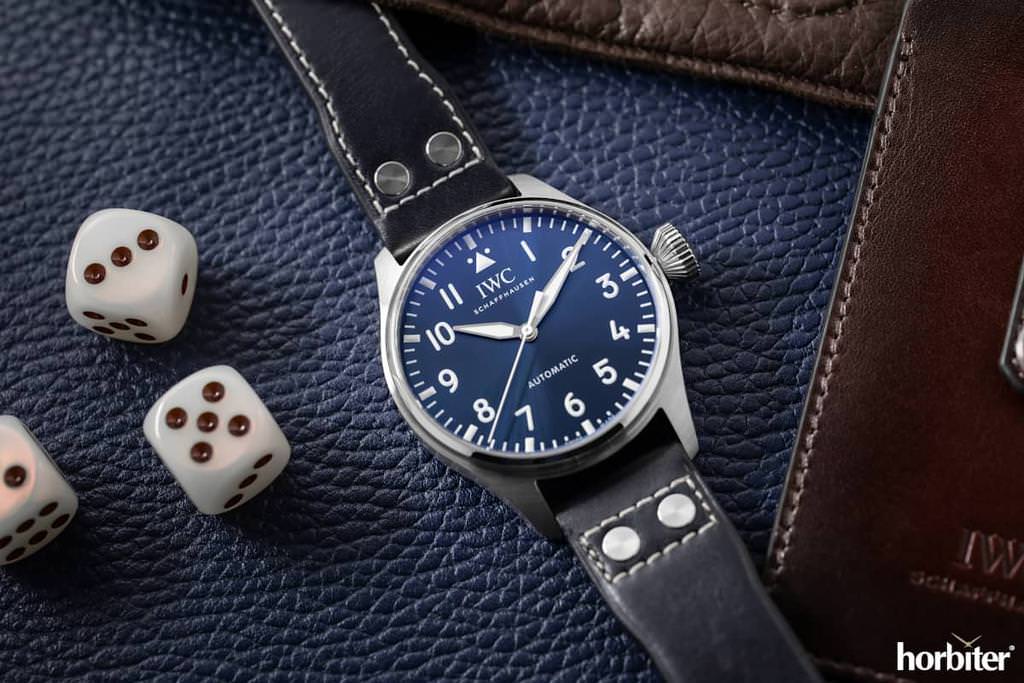 We got our hands on the entire Big Pilot’s Watch collection ahead of Watches and Wonders, historical models included. It helped us compare new and old ones in one go. At first glance, judging by the comments of those who have not seen the new 43mm in the metal, you might easily regard it as a “Big Pilot’s Watch wannabe”.
We got our hands on the entire Big Pilot’s Watch collection ahead of Watches and Wonders, historical models included. It helped us compare new and old ones in one go. At first glance, judging by the comments of those who have not seen the new 43mm in the metal, you might easily regard it as a “Big Pilot’s Watch wannabe”.
We compared the new ones with the first Big Pilot’s Watch‘s modern reissue, the reference 5002, and the original Big Pilot’s Watch during the presentation. The new model aligns with the collection’s vision; the latest collection sports a clean dial without date window and power reserve indication, thus paying homage to the original Observation Watch.
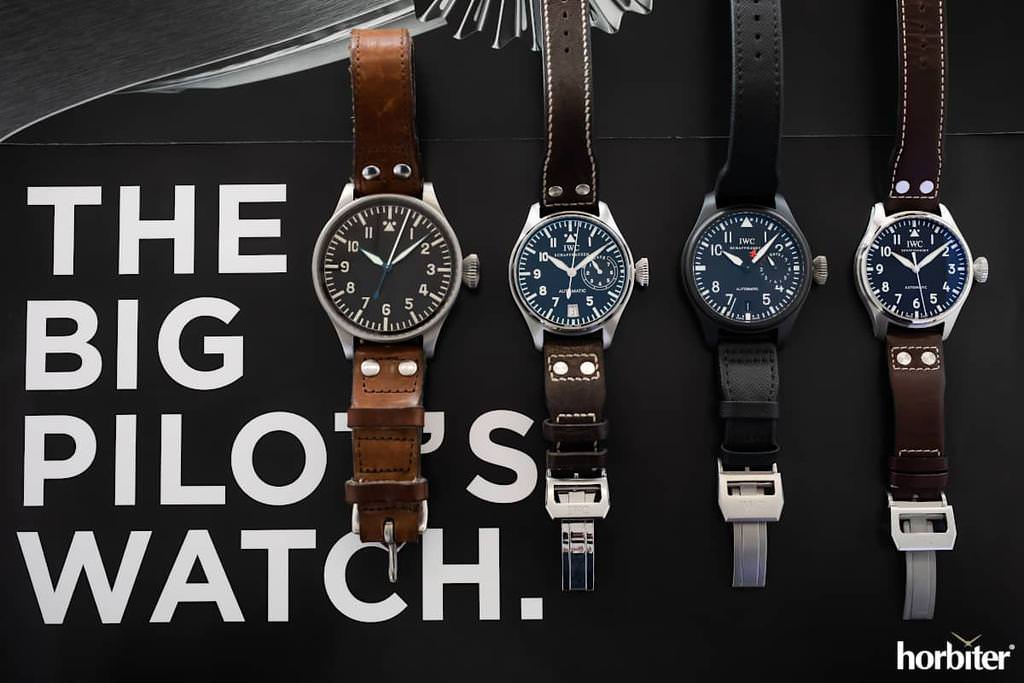 The brand’s designers had a challenging task; they had to design a 43mm Big Pilot’s Watch while preserving the 46 mm model’s signature design and stance. First and foremost, they worked hard on preserving the overall proportions: at 46 mm across and with an 8-day power reserve, the top-end model has a diameter-to-thickness ratio of three.
The brand’s designers had a challenging task; they had to design a 43mm Big Pilot’s Watch while preserving the 46 mm model’s signature design and stance. First and foremost, they worked hard on preserving the overall proportions: at 46 mm across and with an 8-day power reserve, the top-end model has a diameter-to-thickness ratio of three.
The Big Pilot’s Watch 43 meets this ratio by measuring 3.16. The onion-shaped winding crown is virtually the same, yet it has undergone a redesign process to prevent it from pinching the wrist, given the reduced case thickness. With my wrist measuring more than 20 cm, I haven’t noticed any significant difference in appearance once wrapped around my wrist.
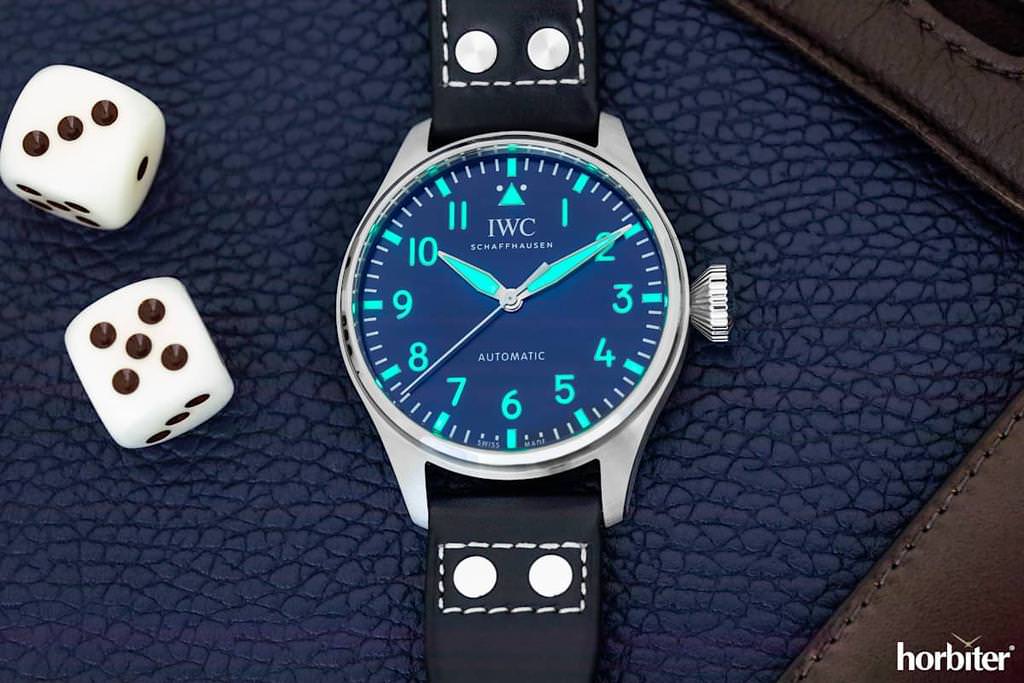 Exclusive to the new collection is a quick-release steel bracelet you can swap with a leather or a rubber strap. The steel bracelet offers superior comfort. IWC engineers worked hard to finally design a bracelet whose execution is as flawless as its comfort.
Exclusive to the new collection is a quick-release steel bracelet you can swap with a leather or a rubber strap. The steel bracelet offers superior comfort. IWC engineers worked hard to finally design a bracelet whose execution is as flawless as its comfort.
Among its main features, I’ll list the links that can be removed and a clever fine adjustment mechanism on the clasp. At the push of a button, you can extend it up to 5 mm.
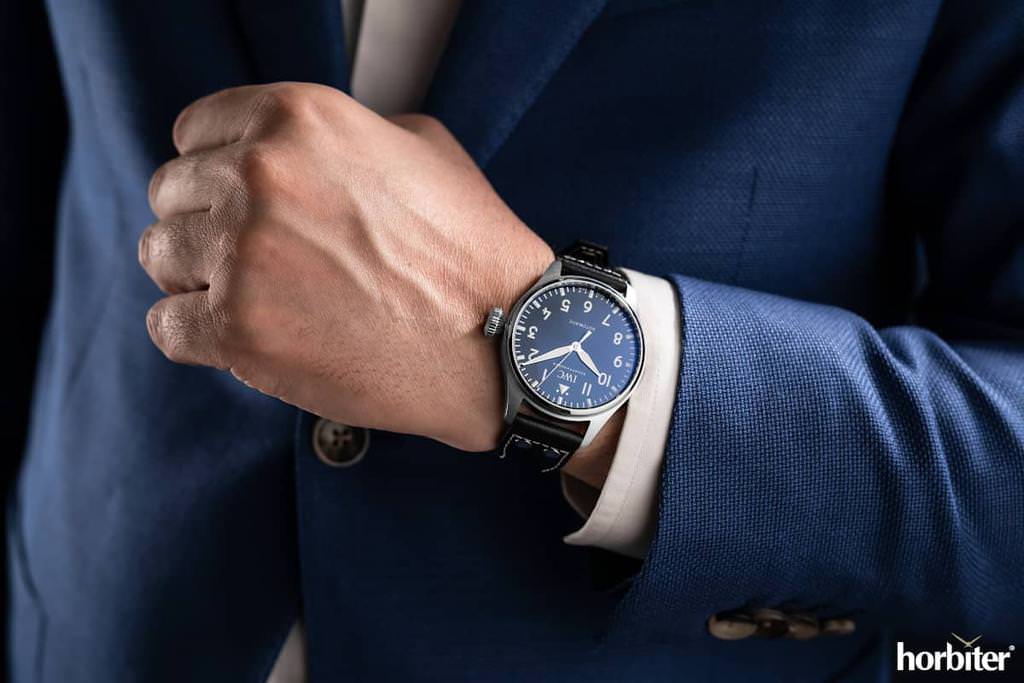 As mentioned, the watch has a presence on the wrist, and I’ll choose, without a doubt, the full steel Big Pilot’s Watch 43 over the leather option, which I find not as comfortable in comparison. You can choose a rubber strap with rivets as a third option, perfect during the summer season, given the watch’s 100-meter water resistance.
As mentioned, the watch has a presence on the wrist, and I’ll choose, without a doubt, the full steel Big Pilot’s Watch 43 over the leather option, which I find not as comfortable in comparison. You can choose a rubber strap with rivets as a third option, perfect during the summer season, given the watch’s 100-meter water resistance.
From a technical standpoint, each model adopts the in-house 82100 calibre, offering 60 hours of power reserve; on paper, it’s standard performance in the benchmark, yet the Pellaton winding system and the adoption of ceramic parts to reduce wear in the long-term ensure that long-term reliability was an essential project requirement.
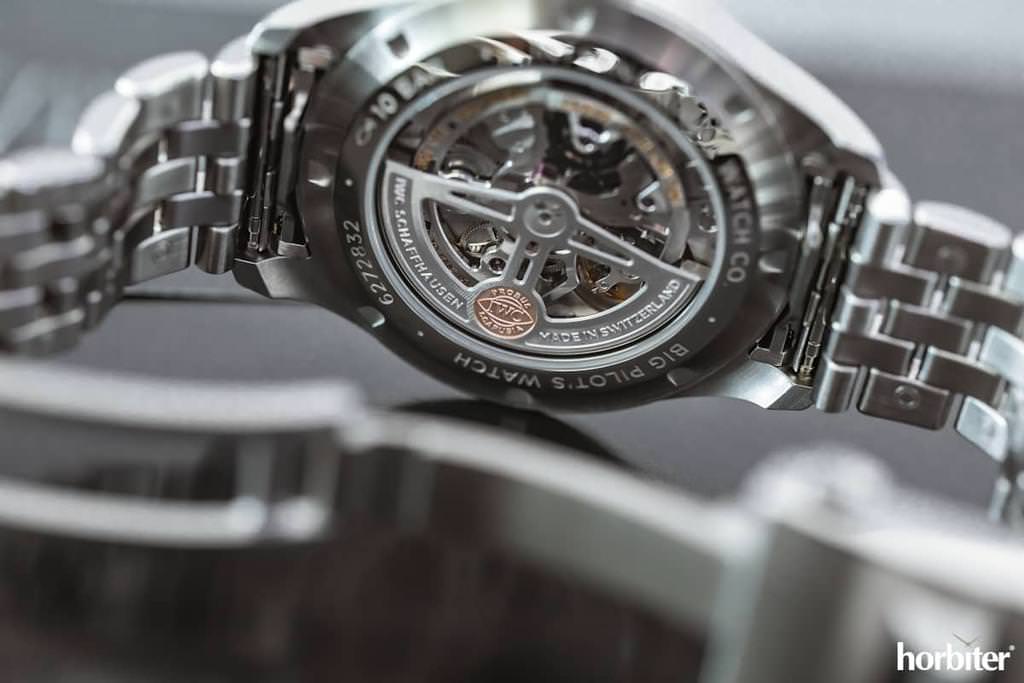 I also love the signature IWC winding mass (the movement is visible through the case back) carrying the Probus Scafusia medallion you usually find on premium IWC timepieces, like the Perpetual Calendar, for example. Price tags range from € 9050 to 10100 for the full-steel options.
I also love the signature IWC winding mass (the movement is visible through the case back) carrying the Probus Scafusia medallion you usually find on premium IWC timepieces, like the Perpetual Calendar, for example. Price tags range from € 9050 to 10100 for the full-steel options.
As far as the last one concerns, I would have gone for an under-10,000-euro price threshold, at least during the rest of 2021; again, my first choice goes, no doubt, to the steel BP 43, paired with the dark blue dial, which is lovely indeed.
If I had to choose a replacement strap option, I’d take the rubber over the leather one. I think the leather strap is too stiff, especially during the first two or three months of use and a loser compared to the other two offerings.
The Piaget Polo Chronograph Blue Panda
Last but not least is the Piaget Polo chronograph Blue Panda. It is a limited edition of 888 pieces that bring the long-established Piaget Polo chronograph under the spotlight.
The new model introduces two new features: the first is a pale blue colour option; the second is a new strap with a “cannelè” pattern and the Piaget logo. Once combined, they give the timepiece a distinctive new look compared to standard Polo Chronographs.
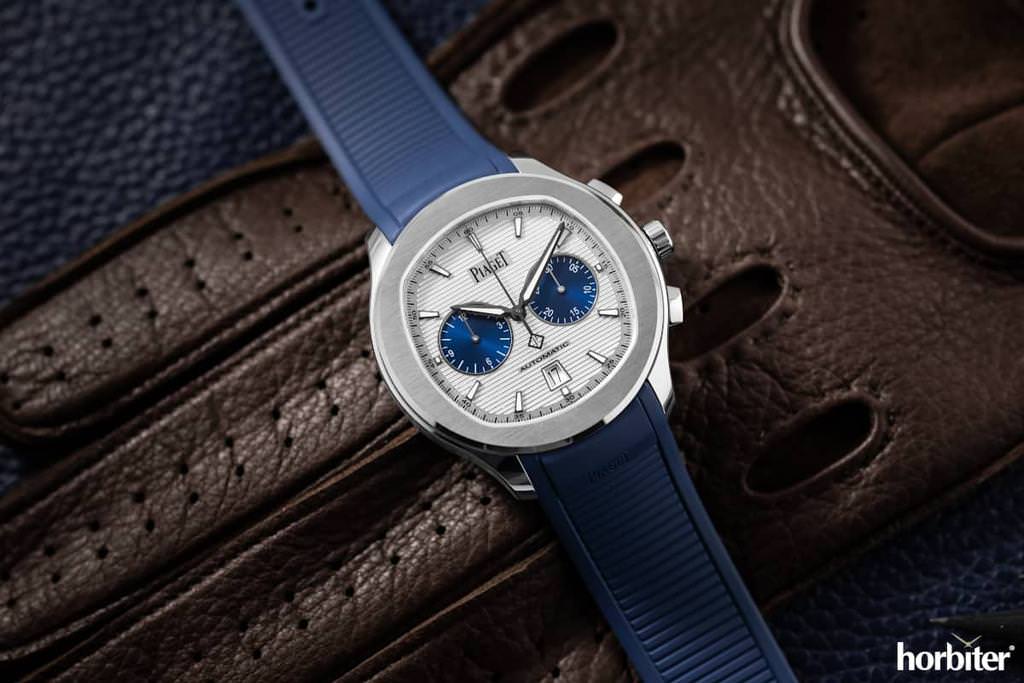 The reveal of this limited edition model is a means to extensively talk about the Piaget Polo and highlight the central theme: a cushion-shaped dial inside a round case, a trait we all quite often disregard.
The reveal of this limited edition model is a means to extensively talk about the Piaget Polo and highlight the central theme: a cushion-shaped dial inside a round case, a trait we all quite often disregard.
Compared to the previous two ones, here is the only chronograph under review and a model I don’t usually like as much as I like the three-hands Polo.
Despite that, I believe the watch pictured here is an excellent and fresher addition to the offering of Polo Chronos. The new colour and features combination adds a unique identity to a timepiece which is standard across the brand’s catalogue for years.
However, it is not as sleek as the classic Polo and the new Polo Skeleton, a timepiece I got my hands on, whose unique design well establishes what the future Polo‘s design language should look like.
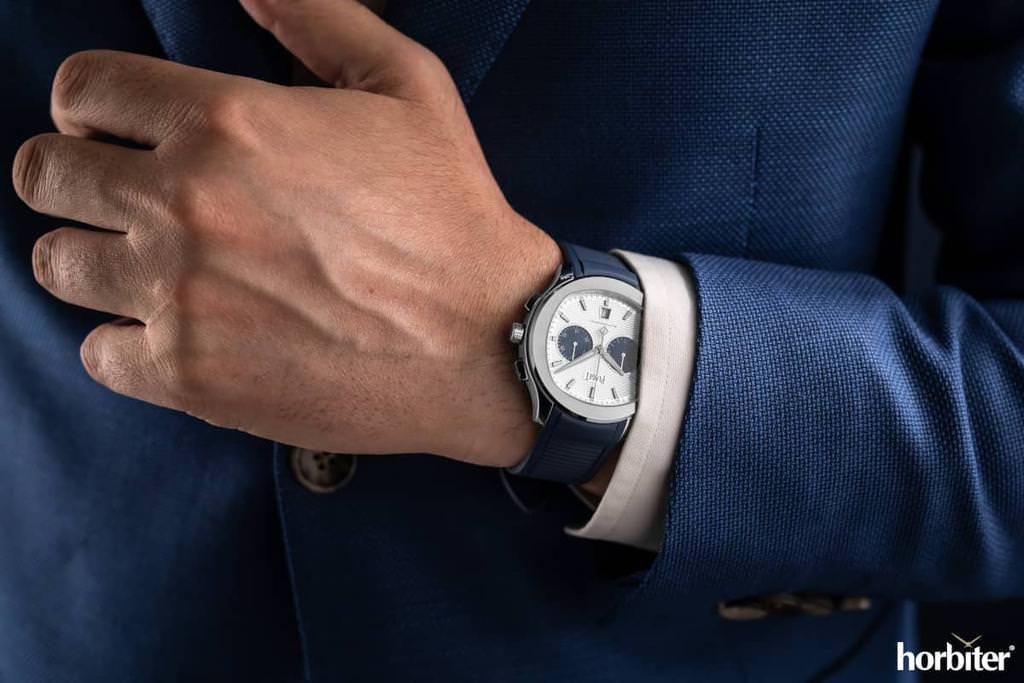 Let’s dig into the product’s features now. The timepiece comes with a dark blue strap and blue registers: the first one has a “cannelé” pattern which mimics the horizontal pattern on the dial.
Let’s dig into the product’s features now. The timepiece comes with a dark blue strap and blue registers: the first one has a “cannelé” pattern which mimics the horizontal pattern on the dial.
The strap comes standard with a quick-change mechanism so that you can swap it by pulling two fasteners placed in the area where the case and strap pair; you can remove the folding clasp’s pin buckle too.
The strap’s rubber is very soft, the build quality is high, and the buckle, with the embossed Piaget logo, offers a stunning brushed-in-the-middle and polished-at-the-edges finish.
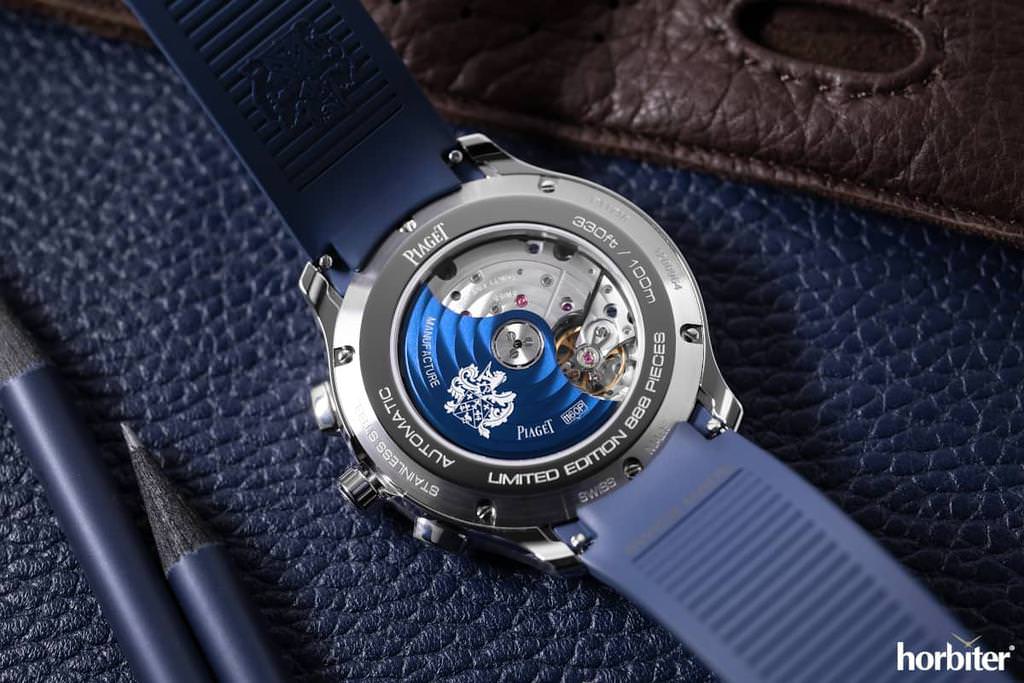 You’ll find the same brushed and polished finish across the case, thus showing off Piaget‘s premium quality. If you scroll down the specs sheet, you’ll read that the watch adopts the 1160 P calibre, a customized 1160 whose winding mass is blue PVD treated and has Côtes de Gèneve decorations on the bridges, while the column-wheel mechanism ensures smooth operation and seamless start, stop and reset functions.
You’ll find the same brushed and polished finish across the case, thus showing off Piaget‘s premium quality. If you scroll down the specs sheet, you’ll read that the watch adopts the 1160 P calibre, a customized 1160 whose winding mass is blue PVD treated and has Côtes de Gèneve decorations on the bridges, while the column-wheel mechanism ensures smooth operation and seamless start, stop and reset functions.
Again, let’s start from the price point down to the product’s overview. Do you think that 16000 Euros is too much or not for such a watch?
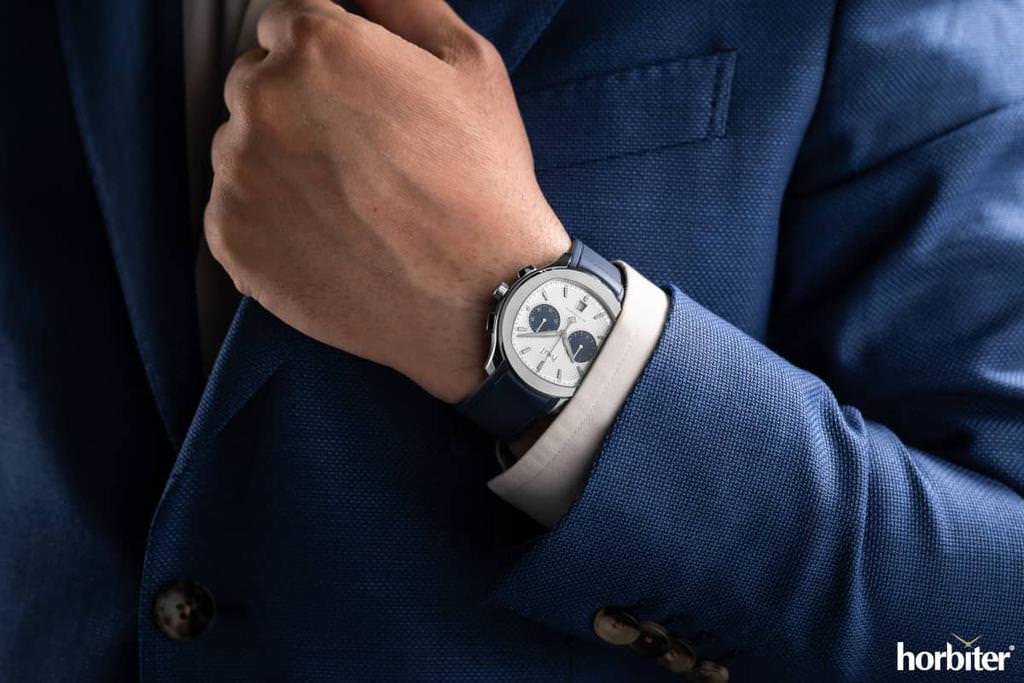 In my opinion, that’s a fair price for a Piaget watch and a limited edition model too. The calibre is refined, too; let’s consider you’ll pay twice as much for timepieces benchmarking this Piaget in most cases.
In my opinion, that’s a fair price for a Piaget watch and a limited edition model too. The calibre is refined, too; let’s consider you’ll pay twice as much for timepieces benchmarking this Piaget in most cases.
Let’s discuss what I’ll change instead: while I approve the new model, I’ll conversely upgrade the Polo Chronograph instead, from an esthetic standpoint. I’ll take this chance as a first step in the Polo Chronograph‘s redesign process, aiming for a timepiece that draws inspiration from the Polo Skeleton as much as possible, like, for example, a slimmer bezel and a larger dial. I also think, and always thought, that the two registers are too close to the centre line.
Final thoughts
What do you think about them? Would you opt for the watches reviewed here, and do you share my thoughts? Would you believe that one wins over the other? Please, share your thoughts in the comments below. I’ll see you next time.
(Photo credit: Horbiter®)
Gaetano C @Horbiter®
